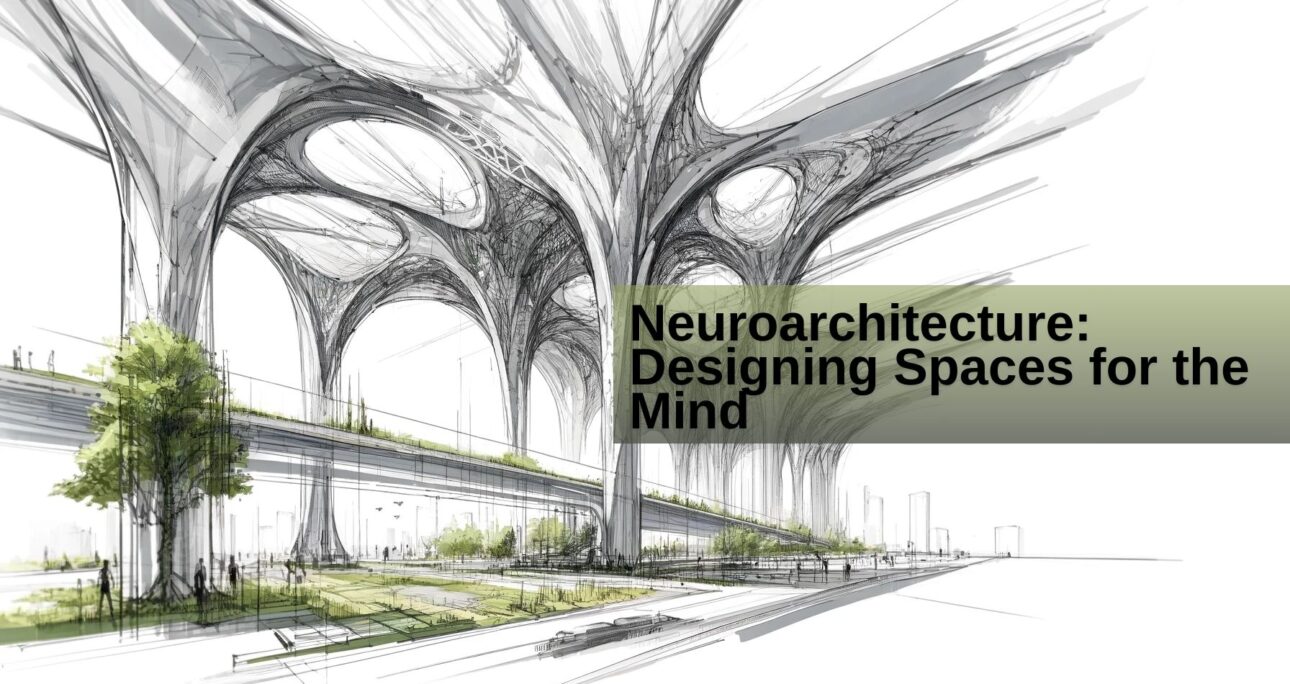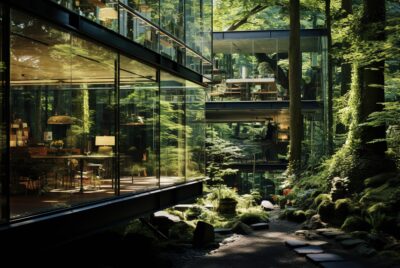In today’s world, architecture is not just about creating spaces for functional needs; it’s about designing experiences that positively influence mental and emotional well-being. Neuroscience, the study of the brain and nervous system, provides fascinating insights into how people respond to different environments. By merging neuroscience with architecture, designers can create buildings and spaces that stimulate productivity, foster creativity, and enhance mental health.
The Intersection of Neuroscience and Architecture
As our understanding of neuroscience deepens, architects are increasingly drawing on this knowledge to shape how spaces affect the human brain. This interdisciplinary field is known as “neuroarchitecture“. It integrates principles of sensory perception, emotional response, and cognitive processes to design buildings that align with human needs. Whether in healthcare facilities, workplaces, or homes, neuroarchitecture enables architects to create environments that promote well-being.
Why Neuroarchitecture Matters
- Improving Mental Health: By designing spaces that reduce stress and anxiety, architects can create environments that support mental health.
- Boosting Productivity: For workplaces, neuroarchitecture principles enhance productivity through optimized lighting, color schemes, and spatial organization.
- Encouraging Social Interaction: Architects use neuroscience to create spaces that foster collaboration and interaction, leading to improved social connections and communication.
Key Neuroscience Principles in Architecture
- Natural Light and Circadian Rhythms Natural light regulates circadian rhythms—the internal clock controlling sleep and wake cycles. Exposure to natural light improves mood, productivity, and overall health. Architects are prioritizing large windows, skylights, and open spaces to maximize natural light, aligning spaces with human biological needs.
- Biophilia and Connection to Nature The “biophilia hypothesis” suggests that humans have an innate connection to nature. Including natural elements like plants, water features, and organic materials reduces stress and enhances cognitive function. Incorporating nature through green walls, indoor gardens, or outdoor views has become a key focus in modern architecture.
- Color Psychology and Emotional Response Different colors evoke distinct psychological responses. For example:
- Blues and Greens: Promote calmness and relaxation, often used in healthcare settings.
- Reds and Yellows: Stimulate energy and creativity, popular in office environments. Architects apply neuroscientific insights on color to design spaces that cater to the intended emotional experience.
- Spatial Layout and Cognitive Ease The layout significantly impacts cognitive ease—how simple or complex a space feels. Cluttered layouts create stress and distraction, while open, orderly spaces encourage relaxation and focus. This principle is crucial in environments like hospitals, where clear paths reduce anxiety and improve patient outcomes.
- Acoustic Comfort and Sound Management Sound significantly affects how spaces influence the brain. Excessive noise leads to stress and decreased productivity. Architects use sound-absorbing materials, create quiet zones, and design with noise control in mind, especially in offices and schools where focus is essential.
Applications of Neuroscience in Different Architectural Settings
Neuroarchitecture in Workspaces As workplace well-being becomes a priority, companies invest in neuroarchitecture to create environments that foster productivity and creativity. Key elements include:
- Natural light and ventilation for improved focus.
- Breakout areas and quiet zones to support different work styles.
- Biophilic design to reduce stress and foster creativity.
Neuroarchitecture in Healthcare Healthcare environments benefit greatly from neuroarchitecture, prioritizing:
- Calming color schemes that reduce patient stress.
- Clear navigation paths for cognitive ease.
- Nature views or green spaces to promote recovery and relaxation.
Neuroarchitecture in Schools Educational facilities adopt neuroarchitecture to create optimal learning environments with:
- Dynamic lighting that supports different activities.
- Flexible spaces for group work and individual study.
- Sound-dampening materials to create focused environments conducive to learning.
Trends and the Future of Neuroarchitecture
As technology advances, architects can employ sophisticated tools to assess neurological responses in design. Virtual reality (VR) and artificial intelligence (AI) allow for simulations of spaces, helping architects anticipate emotional and cognitive responses before construction begins. This iterative design approach optimizes user experience and enhances sustainability.
Conclusion
Neuroscience is transforming architecture in profound ways. By understanding the connection between brain science and spatial design, architects create environments that enhance quality of life. Whether for work, health, or education, neuroarchitecture offers powerful tools for building spaces that support the human mind and spirit. As we continue to explore the human brain’s complex relationship with the built environment, the future of architecture promises to be as inspiring as it is innovative.
Unleash your real estate potential with The Crow Studio!







